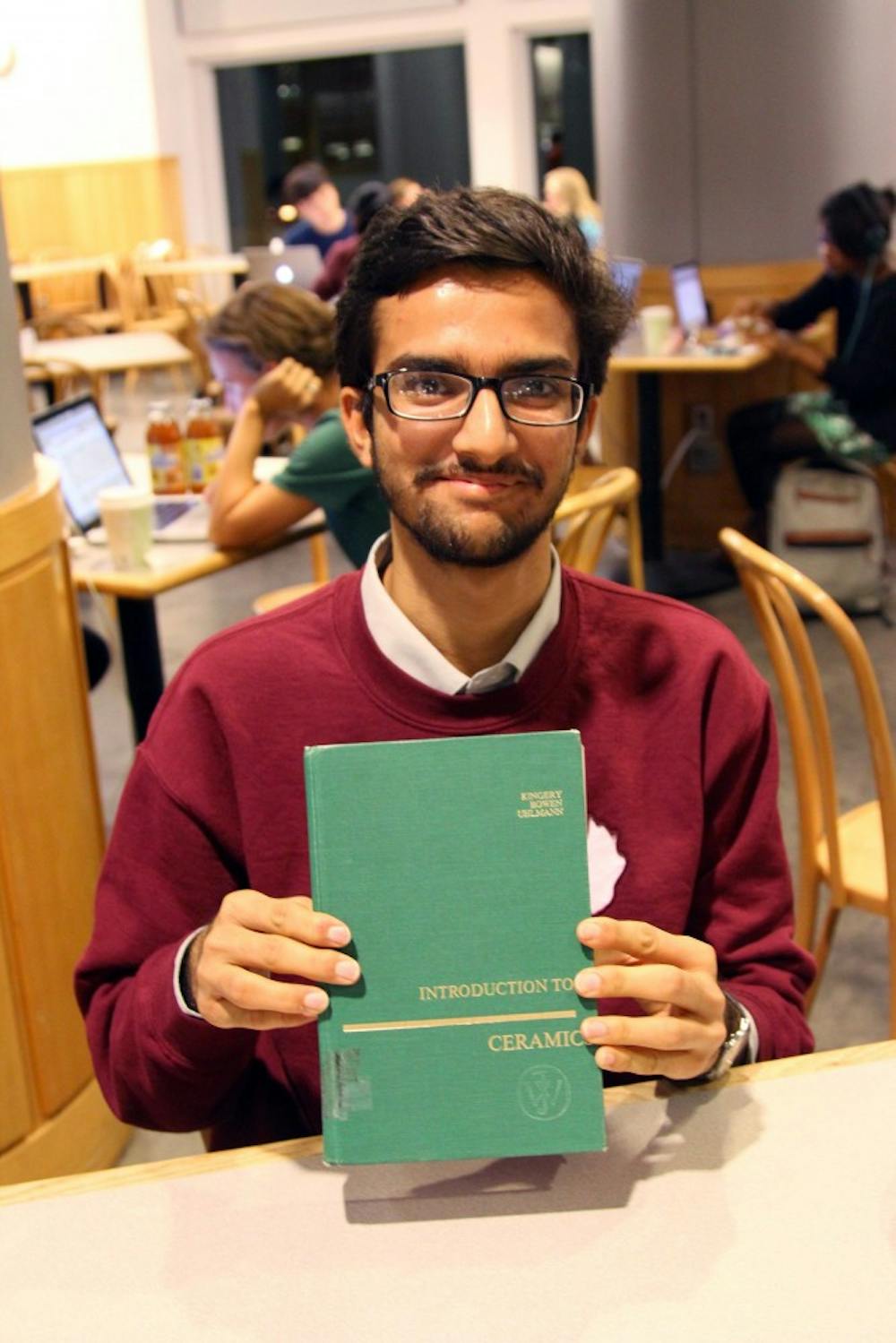The days before midterms are all about hitting the books, but there's no reason they should only involve tears and empty 5-hour energy bottles. This week, Street takes a look at some of the more exciting titles on Fall syllabi and students' reading experiences on campus.
Sam Lichtenberg ’15
English 368American Literature: 1930-Present
“Maus”by Art Spiegelman
What’s it about?It’s a graphic novel about the Holocaust, but in a really interesting form…it’s done through animals, so the Jews are mice, the Germans are cats, the Poles are Pigs and so on. If I remember correctly, the story goes that the New York Times listed it as a fiction bestseller, but the author called them out and said that it was nonfiction, that it was based on his father’s stories. And the New York Times’ response was, “We’ll list it as nonfiction if we go to your house and see that there are mice.”
What’s your favorite book you’ve read for the class?I really liked Lolita, which is probably a weird thing to say given the subject matter of Lolita. But Nabokov has this great fascination with language, and what he does with prose is really amazing.
Favorite book in general?That’s really hard, but it’s probably Infinite Jest. I feel like the more time I spend with a book, the more attached I get — same goes for Anna Karenina.

Virginia Midkiff ’16
“The Craft of Research”by Wayne Booth, Gregory Colomb and Joseph Williams

Religion SeminarRequired Colloquium for Junior Majors
What’s it about?It’s basically a manual for approaching research. We read two to three chapters of it every week, and it’s been really helpful. This book is actually awesome. So far, it’s been all about strategies for choosing a topic. Right now, I’m reading about how to take notes so there isn’t any confusion about citations when it comes time to write.
Any tips?One good tip I’ve learned is, if you can’t summarize a reading or article you want to use in your paper without looking at it, then you shouldn’t choose to set up an argument with it. I’m choosing sources right now, so I’m trying hard to keep that in mind.
Favorite reading you’ve had to do at Princeton?It’s called “The Formation of Islam,” and it’s actually a book I read for a class this semester called [NES 240:] Muslims and the Qur'an. It really gave historical context on the Islamic faith and helped me to understand the text of the Qur'an, as well as Islamic teachings.
Sang Lee ’17
“Major Works: Selected Philosophical Writings”by Ludwig Wittgenstein
Philosophy 338Philosophical Analysis from 1900 to 1950
What do you like about the book?Wittgenstein was a primary player in how analytical philosophy came about in the 20thcentury, and basically every American university approach to analytical philosophy is still done in this same style.
What’s another reading you enjoyed from the class?There was a reading by someone named Carnap, who tried to construct a logical picture of the world … essentially the philosophy of how things relate, how all the sciences — hard sciences and soft sciences — are connected. It was a bold project, and it wasn’t a success, but it was ambitious and candid and Carnap learned from his mistakes, which I respect.
Favorite book?Works of Love by Søren Kierkegaard.
Ada Rauch ’17
“Voices from Chernobyl: The Oral History of a Nuclear Disaster”by Svetlana Alexievich
Journalism 440The Literature of Fact - Unconventional Foreign Correspondence
What made you take the class?I’ve always wondered how to effectively express my feelings, especially while traveling. I like collecting people’s stories but always felt like I wasn’t able to communicate them effectively, so it’s been interesting to see people’s approaches.
What do you like about the book?The language of the book is very real. It’s presented in a very interesting way — it’s all interviews of victims and their families, and I trust what is being said because they’re real conversations, but at the same time it’s still a story.
Favorite book?The Picture of Dorian Gray. It’s both hilarious and tragic. I guess you could say it’s romantically tragic.
Cat Lambert ’15
“Elegies” by Propertius
Classics 534 Roman Lyric and Elegiac Poetry: Propertius & Tibullus
What’s it about? It’s a collection of Latin poetry, and it’s one of the most corrupted texts. There’s a lot of controversy surrounding the manuscripts, and that’s interesting because you can see all the different translations. It’s also incredibly sad. It’s all love poetry, but most of it is about death. And unrequited love.
Favorite reading you’ve had to do at Princeton? I read Virginia Woolf for two separate classes and have really liked both the pieces. One was “The Common Reader” for a [European Culture Studies] class called “Books and Their Readers” with Anthony Grafton, and it was fantastic. I also read “A Room of One’s Own” for a Gender and Sexuality Studies class this semester and really enjoyed it.
Masoomali Fatehkia ’18
“Introduction to Ceramics” by W. David Kingery, H. K. Bowen, and Donald R. Uhlmann
“Clays: Their Nature, Origin and General Properties” by W. E. Worrall
Freshman Seminar 133 Materials World
What’s it about? In general, it’s about ceramics and clay — their compositions and chemical structures. The class is kind of about the history of material sciences and man’s use of the materials throughout time. I’m really enjoying it, but since we don’t have any textbooks, these are the kinds of books I use for my lab reports.
What’s the last book that you read? I don’t remember the author or the title, but it was a book about critical thinking and arguments. There was a section with all the common fallacies in reasoning that has stuck with me.








